-
Posts
19,688 -
Joined
-
Days Won
1,565
Content Type
Forums
Detector Prospector Home
Detector Database
Downloads
Posts posted by Steve Herschbach
-
-
compared to the MXT, I've been wondering what if anything for the areas I've been hunting (old sierra trash areas and parks) would i want to be able to do with my vlf that i can't. it is the only vlf I've every used so i have nothing to compare it to, and so few were sold that very little information is available from other users, I'm talking about the Whites SST one of their mystery detectors made for the western states and never marketed, with almost nothing to adjust, but set for hot soil and fast recovery. i don't mind the all metal hear everything other than that performance is the question, if I had the mxt just for comparison would i likely just run it the same as my SST anyway for gold country?
The Sierra Super Trac (SST) is just a very stripped down MXT that comes stock with the best coil for the unit, a 10" X 5.5" DD. Performance is identical to the MXT/M6 just far fewer features.
I think the MXT has a better balance of park detecting capability AND other type of detecting capability than most machines. And very easy to learn. However, Merton's post is actually spot on with my way of looking at things. I ditched the MXT years ago myself for the F75. The same engineer behind the MXT lead the team that designed the F75. The DEUS is tops for hunting in ferrous but it has one weakness - no small coil. The Racer exploits that weakness.
It does often split between groomed parks and places in the woods. This thread started out being about parks. There are lots of nice, well behaved park detecting machines like the DFX that serve well for that purpose, but when hitting thick ferrous trash, the "carpet of nails" scenario, they come up short. If you really, really are just going to hunt parks than a U.S. Style park machine is more appropriate. For diving into deep ferrous trash, Euro Style machines have the edge these days. That was the whole point if my article at http://www.detectorprospector.com/forum/topic/1378-european-detectors-versus-us-style-detectors-on-target-masking/
-
 3
3
-
-
Technically the Gold Bug 2, GMT, and Gold Racer are all LF, not VLF. I have commented about this before but the reality when talking metal detectors is that VLF has become synonymous with Induction Balance (IB) detectors. http://www.detectorprospector.com/forum/topic/970-minelab-gpz-7000-a-super-vlf-saturable-soil-tips/
-
Any word on release date/price yet?
I have to believe we will know soon, but I don't know any more than you Ray.
-
 1
1
-
-
Hi Mike, welcome to the forum!
I try to stick to what I know. Having never detected in SoCal and never having used the final product it is premature for me to recommend anything to anybody. I have done the best I can to describe the machine and what it might be capable of but that is about as far as it goes right now. What I am seeing suits me to a tee and I will be using nothing but a GPZ 7000 and the Gold Racer for my prospecting from here on out. If you have a Gold Bug 2 you are well covered and no rush to do anything different.
I also am a Sun Ray Pro Gold (the special CTX version) user. They work with everything I own.
-
Wow, that is an impressive repair. I can't imagine actually cutting chunks out of circuit boards and sticking chunks from another detector in myself. A real life FrankenDetector!
-
 1
1
-
-
One last tip. I do the "buy and try" thing and so do many others. Many detectors have a transferable warranty these days. For example, the White's MXT has a two year transferable warranty. Many people buy detectors and never use them more than once or twice. It seemed like a good idea until they went trash digging. Popular detectors are the way to go because there are lots of them for sale, and it is easy to sell them. Right now there are tons of like new DEUS models for sale with transferable warranty.
So, go to eBay, do a search for a used model. You can search "sold listings" to see what the average low resale price is. Right now used MXTs go for $400 - $500 dollars. Then look for units about a year old or less. With White's if you get the serial number from the seller you can call and confirm remaining warranty plus see if the detector has been reported missing.
Then bottom fish. This thread got me kinda sorta craving an MXT. If I proceeded I would place max bids of around $350 on clean units from known sellers. There are so many MXTs for sale that eventually you just get lucky and snag one on the cheap. Call White's, inform them you are new owner.
Now use it a bunch, but keep it clean. If you like it, keep it. If not, sell it yourself being sure to advertise it has remaining transferable warranty. If done right you can get enough extra on resale to cover postages and fees and pretty much break even. Or at least learn a lot for very little spent.
In the last year I have done this with the F19, F75, V3i, and Sierra Pulse Pro. The Fishers usually do not have the transferable warranty however. I honestly don't worry about it much myself but it can offer a level of extra comfort having that.
-
 3
3
-
-
Good for you on responding Comrade. Welcome to the forum, despite my earlier less than warm welcome!
-
-
Very, very hard to go wrong with an MXT! One of the easiest to understand detectors ever made and a huge user base to draw on for tips. http://www.detectorprospector.com/gold-prospecting-equipment/whites-electronics-mxt-metal-detector.htm

-
 2
2
-
-
Oh my gosh, that is way, way different than hunting parks. Old rusted ferrous trash galore. The XP DEUS reigns for pulling non-ferrous out of ferrous trash. Whole other end of the price spectrum but surprisingly good is the Gold Bug Pro. The GBP variant the F19 is highly thought of as is the Teknetics G2 and G2+. White's MXT is great. The Makro Racer and Nokta FORS models have a growing fan base. For parks AND old sites the E-TRAC and CTX-3030 do extremely well. Teknetics T2 and Fisher F75. Garrett AT Pro and AT Gold. This list goes on.
Me personally given what I have on hand I would probably grab my F75 or CTX or FORS Gold+ depending on my mood.
Seriously, part of the problem these days is way too many good machines, making choices difficult and downright confusing. The more forums you read the more confusing it can get because everyone swears their machine is best. A lot of it really is just what appeals to people personally for all sorts of reasons, and there is such a thing as fads when it comes to detectors.
-
 1
1
-
-
This is going to sound facetious but seriously when it comes to coin detecting it is the person operating the machine that makes it great.
For turf detecting more than anything you need good recovery skills, because leaving any sign you were digging holes gets metal detectors banned from parks and other public places. Most people prefer detectors with a high degree of discrimination accuracy also to reduce the number of holes dug.
For more recent vintage coins there are a hundred detectors you could use. To hunt old silver generally takes more dedication and a better detector. If you look at the Findmall Forums http://www.findmall.com you will see a fan club for every brand, and in every brand fans for certain models. They all work because VLF tech really did max out around 1990. Fisher CZ detectors (coin zappers) from that era are still popular and as good as anything newer. I think though if you spent a week visiting forums and reading you would see that Minelab Explorer, E-TRAC, and CTX models are regarded by many turf hunters to be among the best silver hunting machines made. This is because they have very accurate discrimination and performance that hits very well on silver coins.
That said give me most any modern detector and I can do well coin detecting. Right now I have a CTX, a Fisher F75, and a White's V3i and they all find the coins. The only common denominator there for me is I prefer high end "flagship" models but there are guys out there with some pretty basic machines doing well simply because they put in the hours. There are people love the latest and greatest, and old timers that swear the old analog models are better.
Since everything has been pounded for years research and finding good sites is more important than most anything else.
-
 3
3
-
-
So Comrade, by chance are you in the SEO business trying to boost traffic by creating links? There is usually another name for that related to sandwich meat in a can. You fit the pattern first time poster and all. Normally you just get banned as has happened to you on other forums but for once the link was actually close to being on topic and some interesting information there so I am letting it go. Now I am just curious to see if you answer or this was just a drive by post on your part.
-
 1
1
-
-
In theory the mineralization meter can be used this way, but as a practical matter I think not really. It is very much a near surface thing, and you have to pump the coil up and down to get an accurate reading. I can only see it working in a shallow dry wash but such that you could probably just eyeball the color difference in the sand. A more practical method with the Gold Racer might be to crank the sensitivity to the edge of overload on lower mineral content soil, then sweep and hunt for overloads. Again though you are talking near surface effects, nothing like a magnetometer.
The White's V3i has an almost unknown feature whereby the machine continuously graphs magnetic content.
I am a bit skeptical of the practicality of it all. Most of the trace black sands with a metal detector thing seems to hark back to the old BFO days. People bring it up now and then, and I hear lots of opinions, but nobody ever seems to actually put it to the real test. A project for another day I guess.
More intriguing to me is a trick a GMT user told me about years ago, but I keep forgetting to try it. He claimed the mineralization meter could be used as an extra aid in identifying ferrous items.
-
 1
1
-
-
Wow, brand new machine though - gotta like that!
-
It is a win win win. I get to play with some of the latest toys, the manufacturer gets good feedback, and you guys get the first peek at stuff.
-
 1
1
-
-
-
RNB Innovations at http://rnb-innovations.com/
Aftermarket battereis for Minelab and White's seem to have a good reputation.
-
Well, I sold my GMT and Gold Bug 2 before getting the Gold Racer so I have none on hand for making direct comparisons. Further, I believe any fair head to head tests need to be left until the final factory production Gold Racer is available. I actually have questions myself.
I know that I can easily find gold weighing under one tenth grain with the Gold Racer in ground that allows the machine to be run at higher sensitivity levels. I also know the Gold Bug 2 has come up short compared to the GMT for penetration on larger gold in magnetite laden soils. My gut feeling is that the Gold Racer falls between the two (GMT and GB2). It really does push the Gold Bug 2 hard for what it can do on small gold, but I do think it will also be proven that the Gold Racer has an edge over the Gold Bug 2 on larger deeper gold due to its ability to use DD coils. The Gold Bug 2 only has three coils available, all concentric. I will bet my money right now that the Gold Racer will demolish the Gold Bug 2 on a bit larger gold in ground where the 15.5" x 13" DD can run effectively. But as the gold gets smaller it is going to be a hair splitting thing.
The GMT does have very good capability regarding overloads occurring in bad ground and I am curious how the Gold Racer and the GMT handle the worst ground. The Gold Bug 2 has no overload signal and silent masking can be an issue. The GMT is like the Gold Racer in that it issues an audio overload signal, and the advice is the same - raise the coil or lower the gain. From the MXT Engineering Report:
"The GMT's circuitry broke a lot of new ground. It uses a reactive impedance transformation network to boost transmitter voltage for higher sensitivity. It uses an active transmitter regulator to keep transmitter voltage constant even when the search coil is moved over black sand that would blow an unregulated machine off the air."
Running the GMT and Gold Racer side by side on magnetite laden soil with the stock coils would be interesting. Bottom line is a field day could be had comparing the Gold Racer, Gold Bug 2, and GMT directly against each other in actual hunting conditions on found targets. Having done similar tests myself I can tell you it really just depends on the ground mineralization in a particular area and the exact nature of the gold.
Anyone that has followed my use of detectors over the years will know that when talking about small gold capability for me it has always been about the Gold Bug 2 and the GMT plus earlier White's Goldmaster models. Many people still prefer the Goldmaster 3 to the GMT, in no small part because of earlier models being in what people think is a better housing for prospecting. I now think the discussion boils down to GB2, GMT, and Gold Racer. However, we all know both the GMT and GB2 have fan clubs and successful users. They work better for different people for a variety of reasons. The Gold Racer just adds another choice to the mix. I really think I can find gold in general about as well with any of them, so it comes down to how they handle, how they feel, how they sound, the little extras by way of features.
No one person or two is going to sort this out. Check back a year from now and I am sure the picture will be clearer. My way of thinking with detectors is they are all different and all excel in certain ways. A long time strategy of mine has been to not run with the herd, but to use something different, seeking to leverage this idea of fundamental differences. In other words, if I was in a place where everyone has used a Gold Bug 2, I would be more likely to use a GMT. Or the other way around. No point in putting the same detector over the same ground over and over. I have enough faith in Makro that I decided going forward to be what for now will be a very rare person putting the Gold Racer over the ground for the first time, because I think that gives me an oddball edge of sorts. Kind of the feeling I always have being the first guy to run a GPZ over the ground.
A bonus is that unlike with White's and Fisher you can bet Makro will be listening hard to early Gold Racer users and doing anything and everything they can to improve the model even more. This is a company not content to sit still for long.
-
 2
2
-
-
The 0.3 gram nugget was not a test piece on the surface, it was a nugget found in the ground while detecting for gold with the 15" coil. The only way I test detectors these days is to go use them.
-
 6
6
-
-
so having the cable on my gmt loosely wrapped around the shaft might cause a problem.
If you are experiencing false signals, yes. If not, well, it's only a problem if it's a problem!
-
 1
1
-
-
Simple really. The coil cable has metal in it. Any loose cable moving around a foot over the coil can cause a false signal. In general the cable should go straight up the shaft, with excess wound at the top near the control box.
However, in order to allow the coil to swivel and change angles, it is common to leave a little slack near the coil. It the coil strikes something hard enough, that short bit of cable can shift quickly, causing a transient false signal.
The fitting at where the coil connects to the control box not being absolutely firm can do the same thing.-
 2
2
-
-
As I said, I am only assuming looking at the FORS Gold+ in front of me that the coil on the production Gold Racer will look the same, but I do not know that for a fact and Dilek will have to confirm. Perhaps I should not have mentioned it yet, cart ahead of the horse and all that. All details on accessories and pricing I will have to leave to Dilek.
-
Can't beat the Bug for simplicity. I never understood people who think it is hard to run. The Gold Racer to really leverage what it offers will take some learning. The all metal mode is just as straight forward as any. The disc modes is where things get intriguing. I am just not seeing any dire need for a happy owner of a GB2 to ditch it in favor of the GR per se. There are other GB2 owners, who, like me, will look at the Gold Racer and tell themselves "I gotta have that one instead" but they will know who they are and why and don't need me to tell them so.
-
 1
1
-
-
Ray, I am just staying out of all that and leaving it to wiser and more experienced hands. The high frequency can cut both ways. It seems to call big ferrous as ferrous better than lower frequency machines for some reason, but the machine is so sparky it can produce transient high tone blips in ferrous. I am sticking with my "it's a gold machine" line until somebody else proves otherwise. It has a killer all metal mode that alone is enough to make me happy and in scattered ferrous seems really well behaved. But I did not dive into any nail pits so just don't know.
-
 1
1
-



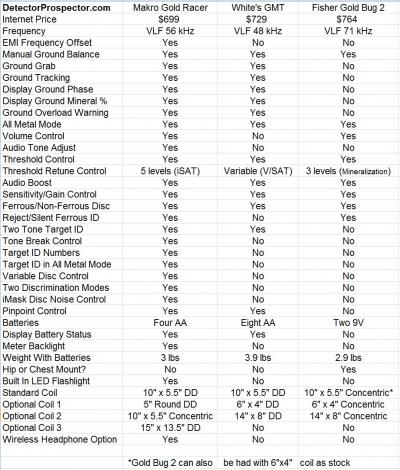
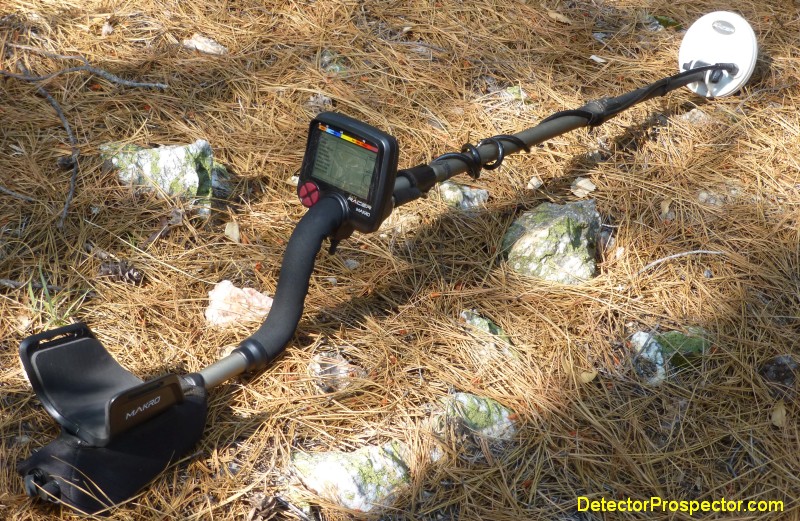


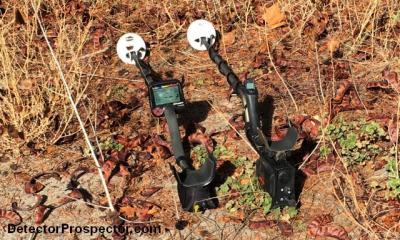
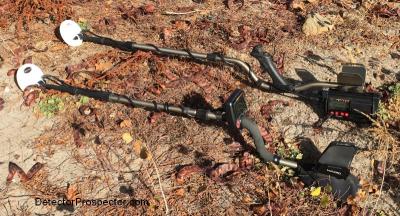
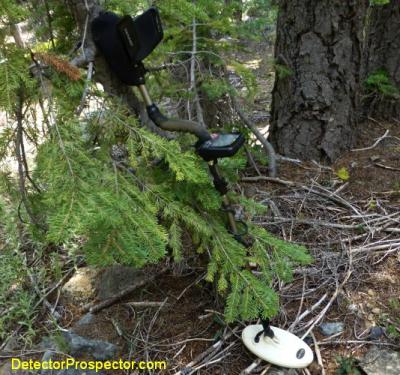
Detailed Review Of Makro Gold Racer By Steve Herschbach
in Nokta / Makro Metal Detectors
Posted
I did use the concentric but not enough. Two things. Slightly more depth than the stock DD in Mild Ground. And better ferrous discrimination. DD coils tend to false more on flat steel items like bottle caps and flat rusted steel.
VLF Concentric vs DD Coils